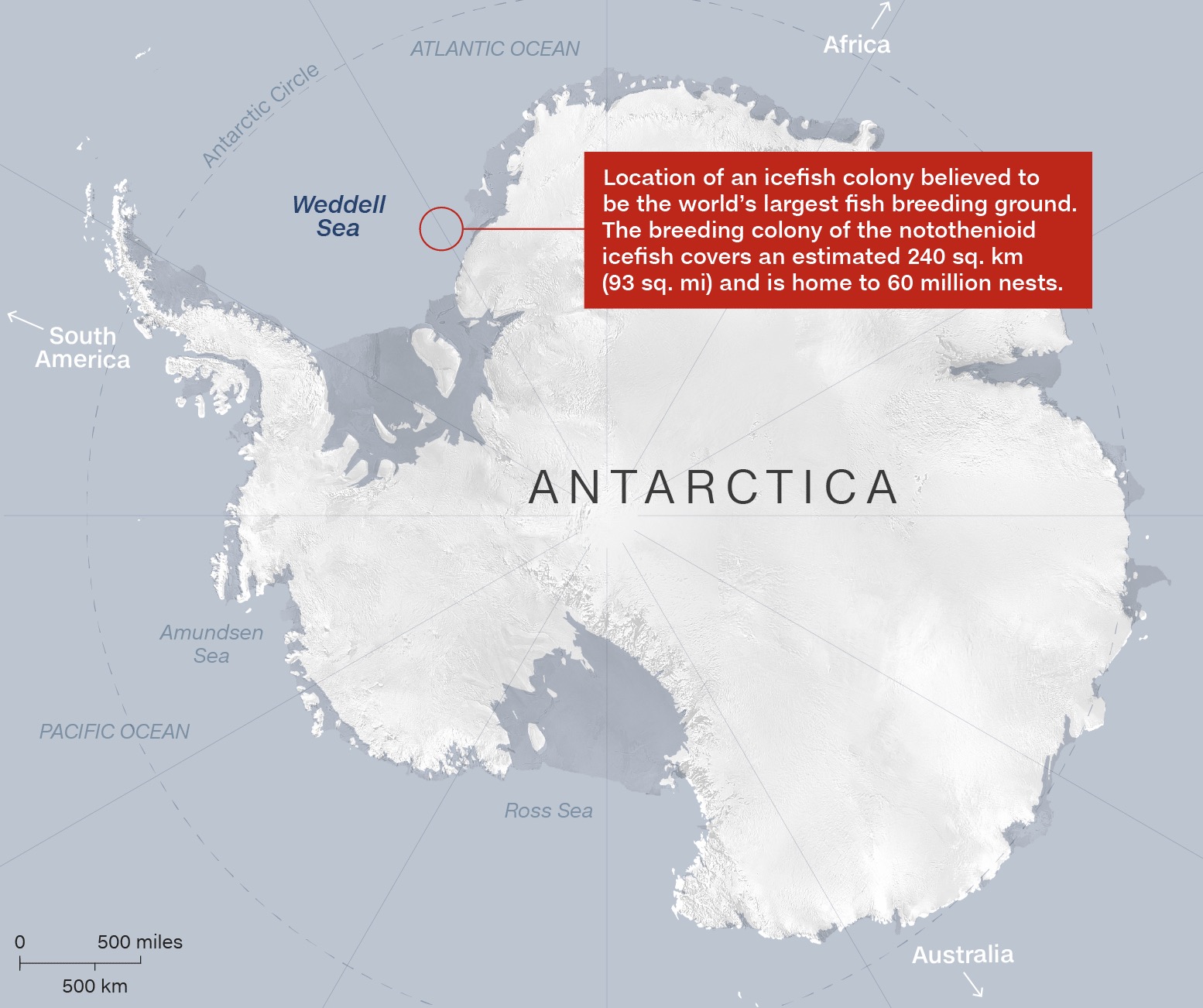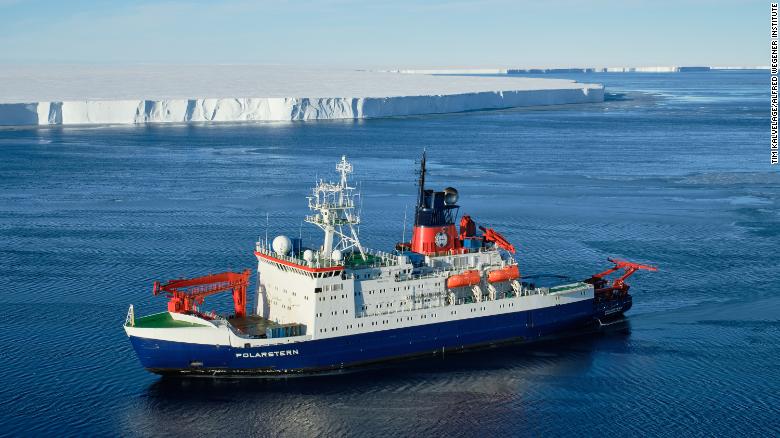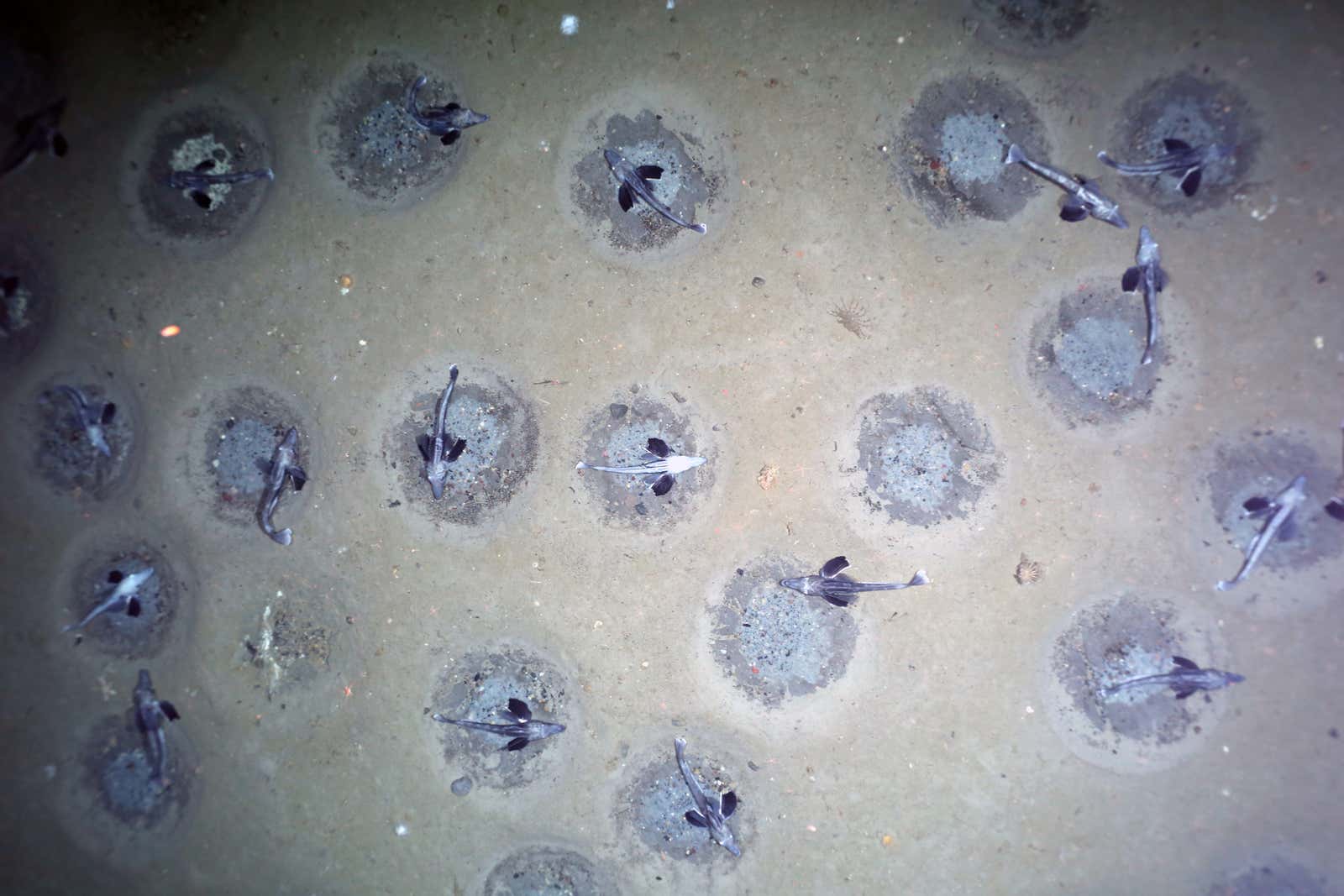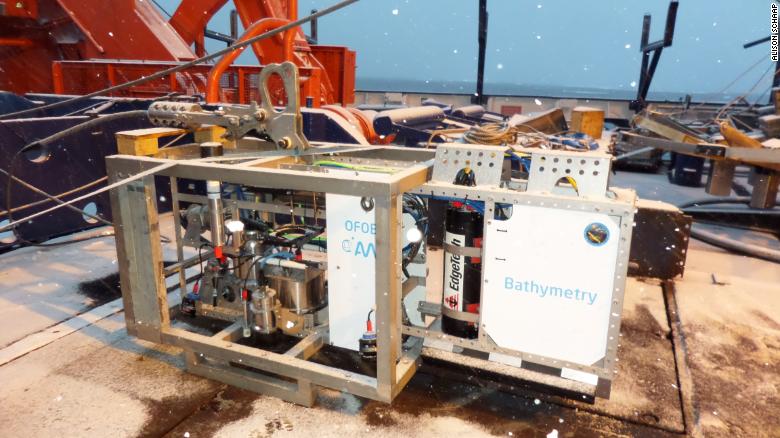Deep-sea biologists were shocked recently to discover what may be the largest known spawning site for a fish species. This location is located near Antarctica, the researchers describe the fish population as tens of millions of fish, stretching across the sea floor.

The population of ice fish (Neopagetopsis ionah) was discovered in February 2021 by the camera on board the research vessel Polarstern in the Weddell Sea, Antarctica. Biologists then studied them and published them January 13, 2022 in the journal Current Biology.

Ship Polarstern
To survive at such low temperatures, they have developed an anti-freeze protein in their blood that prevents ice crystals from growing. Ice fish have a see-through skull and transparent blood. They are the only vertebrates that do not have red blood cells.

The researchers discovered this population by accident, when an interdisciplinary team of scientists was on hand to study the movement of ocean carbon and the potential effects of climate change on local ecosystems, among other goals. In the process, they came across one nest of fish, then another, and then another, which seemed to stretch on forever.
Autun Purser, a deep-sea biologist at the Alfred Wegener Helmholtz Center for Ocean and Polar Research, said:There are fish everywhere. Previously, only a few nests or individuals were found in the area. This is like finding a gold mine after years of finding only a few pieces.”
“We saw one nest after another for four hours straight. During that time, we surveyed 6 kilometers of the seabed,” Purser said.

Camera system on board Polarstern
Each icefish nest has a diameter of about 75 cm, a depth of 15 cm, an average of 3 m2 with one nest. In total, they counted more than 100,000 nests using sonar, about 16,000 of which were captured in photos and videos. They believe the total area of the nesting ground is about 240 square kilometers and estimate the true number of nests could be as high as 60 million.
Many nests hold thousands of eggs and are usually guarded by an adult icefish, while others are left empty. The researchers also saw some dead fish in the nest.
Baby icefish live by eating algae, small animals that hide from predators. If ice melts due to global warming, their life cycle will be affected.
Of course, Antarctica is slowly melting and the proposal to turn the Weddell Sea into a marine protected area has been supported by member states of the European Union and others since 2016.

Purser’s team plans to return in April to scan the entire seafloor north of the population. Given the surprising size of the spawning grounds, they believe there could be even more exciting discoveries in this sea.
Reference: Gizmodo
.
